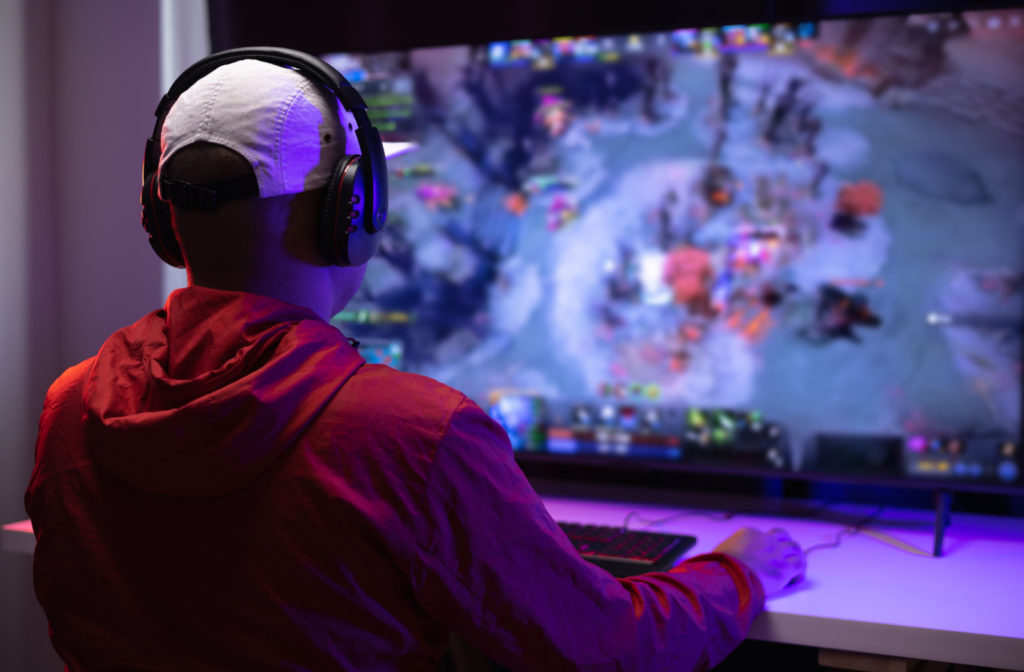High myopia is a term that describes severe nearsightedness. Nearsightedness causes distant objects to appear blurry while nearby objects remain clear. But it’s more complicated than this.
Myopia is caused by the elongation of the eye, which stresses its inside structures, leading to increased risks of vision-threatening eye conditions. With high myopia, the level of nearsightedness is significant, causing a greater reliance on glasses or contacts for clear vision in everyday life.
Causes of High Myopia
Myopia is a refractive error of the eye. Refraction is how light is reflected inside the eye, and light needs to land on the retina in order to see clearly. Myopia causes the eye to grow too long, which makes light land in front of the retina, leading to blurry distant vision.
Myopia generally develops during childhood. Babies are born with shorter eyes and blurry near vision. As they grow, their eyes gradually reach the expected length, and their vision becomes normal. However, sometimes, the eyes continue to grow beyond this stage, and they develop myopia.
The eye grows the fastest during childhood and slower during adolescence when overall growth slows down. Children who develop myopia earlier, around 6–8 years old, have more time for their eyes to grow, which can develop into high myopia.
The exact mechanisms of myopia progression are unclear, but some factors can increase your risk of developing it:
- Genetics play a significant role in high myopia, meaning if either of your parents have it, you have a higher chance of developing it.
- Excessive near work, like reading, screen use, and activities requiring intense focus, can contribute to the progression of high myopia, especially during childhood and adolescence.
- Certain medical conditions, such as Marfan syndrome or Stickler syndrome, are associated with myopia.
- Lack of time spent outdoors, especially during the development years, has been associated with myopia progression.

Symptoms of High Myopia
High myopia is generally characterized by a prescription of -5.00 to -6.00 dioptres (D) or more.
The most common symptom of high myopia is blurred distance vision. Those with high myopia may also experience:
- Headaches
- Eye strain
- Eye fatigue
- Trouble seeing at night
If you experience any of these symptoms, contact your eye doctor as soon as possible to receive an eye exam.
Risks of High Myopia
Because of the shape of an eye with myopia, those with high myopia are at a higher risk of vision-impairing eye conditions, such as:
- Retinal detachment: when the retina pulls away from the underlying tissue.
- Glaucoma: a group of eye diseases that damage the optic nerve.
- Cataracts: the clouding of the eye’s natural lens.
- Myopic macular degeneration: the thinning of the macula, the middle part of the retina responsible for central vision.
Treatment for High Myopia
Once myopia has developed, it can’t be reversed or cured. Myopia can be corrected with eyeglasses and contact lenses. Some adults can have laser eye surgery to improve their vision, but it’s not suitable for everyone or all levels of myopia.
There are no “safe levels” of myopia, and because of the risks associated with this condition, myopia control methods have been researched and studied to help slow its progression.
Preventing or controlling high myopia is a multifaceted approach that requires reducing exposure to high-risk factors and implementing myopia progression control methods. Myopia control should also be employed on eyes that are still growing to prevent myopia from developing into high myopia, so these methods are most effective for children.
Some common myopia control methods include:
- Orthokeratology (ortho-k) contact lenses: These custom-made specialty contact lenses are worn overnight to gently reshape the cornea to provide clear vision throughout the day without glasses or contact lenses. They have also been shown to reduce myopia progression by 50%.
- Low-dose atropine eye drops: These drops were developed to dilate the pupils for eye exams but have been shown to slow myopia progression between 30–50% in children.
- Peripheral defocus contact lenses: These contact lenses have different rings that cause blurriness in the child’s side vision while keeping their distance vision clear. This blurriness is believed to help slow down the growth of their eyes.
Monitoring eye health through regular eye examinations is crucial for those with high myopia for early detection and intervention in case of complications to prevent vision loss and provide tools to improve vision.
In some cases, your eye doctor may recommend a combination of treatments for the best results.
Navigating High Myopia with Knowledge & Care
While high myopia can pose challenges to daily life, understanding its causes, recognizing associated risks, and adopting appropriate management strategies can help maintain eye health. Prevention and early intervention are crucial for managing this condition.
We can help with high myopia at Pacific EyeCare Optometry. Call us today to book an appointment and receive a personalized plan.



